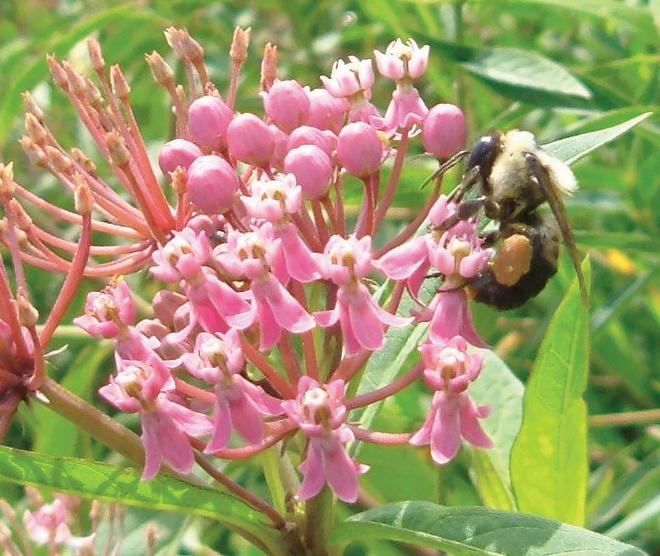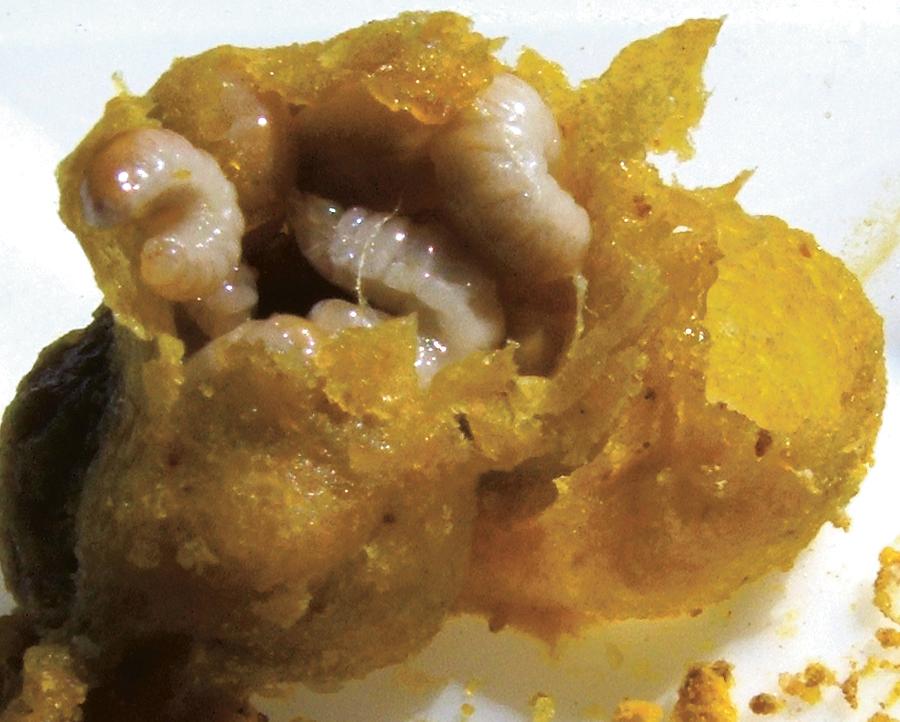
Each spring, the fate of the summer’s bumble bee population hangs tenuously on the ability of independent queen bumble bees to survive pests, predators, and inclement spring weather. Nests are begun anew each spring by queens who survived the winter, burrowed in the soil, protected from freezing by an antifreeze in their blood. Their first task once they emerge is to find a suitable nesting site. Some bumble bee species prefer to nest above ground, typically in clumps of grass. Other bumble bee species prefer to nest underground, typically in abandoned rodent nests. Since the queen is on her own, she must now find food both for herself and for her young. Early sources of pollen and nectar, such as willow, are essential to the survival of these queens. The survival of these queens, in turn, is essential for the summer’s bumble bee population, as these queens produce all the workers of the summer.
The queen brings the pollen and nectar she collects back to the nest (Figure 5.3). She has “pollen baskets,” concave areas for pollen storage, on her back legs. She will pack pollen tightly into these baskets for transport back to the nest. Back in the nest, the queen forms the pollen into a clump onto which she lays eggs. She drinks nectar from flowers and stores it in her “nectar crop,” a holding tank in her abdomen. The queen will use wax, produced by glands on her abdomen, to form a pot to hold the nectar she has collected. Bumble bees collect only enough surplus nectar to last through a few days of inclement weather. They do not convert the nectar into honey, as do honey bees.

The queen will lay from eight to twelve eggs on the clump of pollen. She covers the eggs with wax. After three days, larvae emerge from the eggs. The larvae remain under the wax cover, which expands as the larvae rapidly grow (Figure 5.4). The rapid larvae growth is fueled by the nectar and pollen fed to them by the queen. After around fourteen days, the larvae spin cocoons and pupate. Pupae remain in the cocoons for several weeks, finally emerging as adults. These bees are usually all female worker bees. The queen finally has some relief. These workers begin to take over some of the colony maintenance duties, such as foraging for nectar and pollen, defending the colony, and feeding the young. The queen can now dedicate more of her time to laying eggs.
Bumble bee colonies will usually produce queens and males towards the end of the colony life cycle. The queens and males will leave the nest to mate. After mating the new queens enter hibernation, usually digging themselves several inches down into the ground, where they will survive the winter. All other colony members, including the old queen, die off in the fall, leaving the hibernating new queens as the only link to the next generation of bees.
